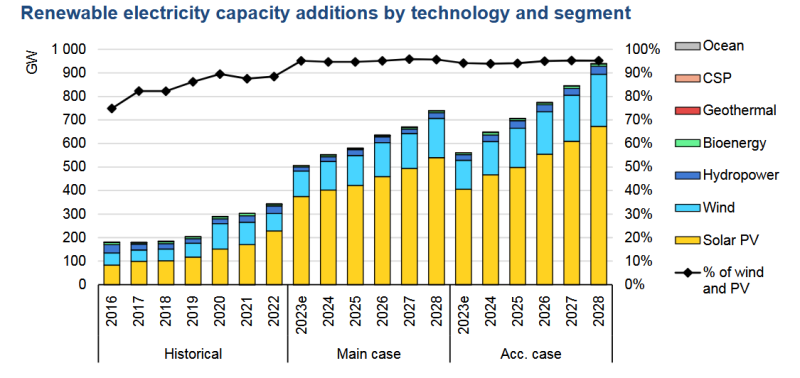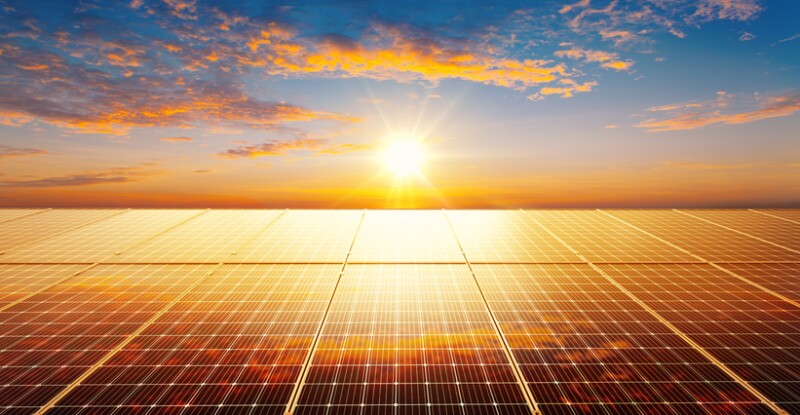In the face of climate change and the increasing need for sustainable energy sources, the transition from fossil fuels to renewable energy sources is gaining momentum globally. The outcomes of COP29, which took place in November 2024 in Baku, Azerbaijan, have set high expectations for accelerated action through climate financing. With a stronger focus on sustainable energy solutions, the global dialogue continues to intensify, building on the ambitious targets to combat climate change and foster a transition towards a greener, more sustainable future.
Solar energy, a vast, inexhaustible, and clean resource, stands at the forefront of this shift. This article explores the reasons behind the shift to sustainable energies, the role of solar energy within the renewable energy basket, major technological advances, and the global efforts and alliances that have shaped its rise.
The Urgency of Shifting to Sustainable Energies
The global energy landscape is undergoing a significant transformation driven by the need to mitigate climate change, reduce greenhouse gas emissions, and achieve sustainable development. According to the United Nations, fossil fuels account for more than 80% of global energy production, but cleaner sources of energy are gaining ground with about 29% of electricity currently coming from renewable sources.
The International Energy Agency (IEA) reports that global carbon dioxide (CO2) emissions from fossil fuels reached a record high of 37.2 billion metric tons in 2023. Renewable energy sources, particularly solar energy, offer a viable solution with their ability to provide clean, affordable, and abundant energy.
Historical Data and Forecasts: Solar Power’s Rise in the Renewable Revolution
Global renewable energy capacity increased by 50% in 2023, with photovoltaic (PV) technologies—commonly known as solar panels—making up three-quarters of the additions, according to the IEA's Renewables 2023 report.

By the end of 2023, PV accounted for 5.4% of the global renewable energy mix. Projections suggest this share will more than double to 12.6% by 2028, underscoring solar power's growing importance in the transition to cleaner and more sustainable energy sources.
How Solar Energy Works
Solar energy is an integral part of the renewable energy mix due to its immense potential and versatility. The amount of sunlight that strikes the Earth's surface in just 1.5 hours is enough to meet the entire world's energy consumption for a year. This sunlight can be converted into electrical energy using PV panels or mirrors that concentrate solar radiation.
Solar power systems use PV cells, typically made of semiconductor materials, to convert sunlight into electricity. When sunlight hits these cells, it frees electrons, creating a flow of electrical energy in the form of direct current (DC). This DC electricity is then converted into alternating current by an inverter, making it suitable for use in homes, businesses, and the electrical grid.
Solar-cell efficiency is the portion of energy in the form of sunlight that can be converted via PV into electricity by the solar cell. Though most commercial panels have efficiencies from 17% to 20%, researchers have developed PV cells with efficiencies approaching 50%. Improved efficiency and lower costs have led to a surge in global solar energy production.
Types of Solar Power Systems
- Concentrating Solar Power (CSP): CSP systems use mirrors or lenses to concentrate sunlight onto a small area, typically a receiver that collects and converts the solar energy into heat. This heat is then used to produce steam, which drives a turbine connected to an electricity generator. CSP is typically used in large-scale power plants. For example, a solar power tower, where mirrors focus sunlight onto a central tower, generating heat to produce electricity, is a common CSP technology.
- PV Distributed Systems: These are smaller-scale solar power systems that are often installed on rooftops of homes, businesses, or schools. They directly convert sunlight into electricity using solar panels. The electricity generated can be used on-site, reducing reliance on the grid. An example would be a residential rooftop solar installation that powers a household’s appliances and sends any surplus electricity back to the utility company.
- Utility-Scale PV Systems: These are large solar power plants that generate electricity on a much larger scale compared to distributed systems. The electricity produced is fed directly into the grid and is used to supply power to a large number of consumers, similar to how traditional power plants operate. For instance, a solar farm with thousands of panels spread over acres of land generates electricity for distribution to cities or regions.
Technological Advances in Solar Energy
Significant technological advancements have enhanced the efficiency and affordability of solar power.
- Improved PV Cell Efficiency: Innovations in PV cell technology have significantly increased the efficiency of converting sunlight into electricity.
- Energy Storage Solutions: Advances in battery technology enable the storage of solar energy for use during non-sunny periods, enhancing the reliability of solar power.
- Smart Grid Integration: The development of smart grid technologies facilitates the efficient integration of solar energy into the existing power infrastructure.
Key Innovations
- Perovskite Solar Cells: These have the potential to achieve even higher efficiencies and lower costs compared to traditional silicon-based PV cells.
- Bifacial Panels: These panels capture sunlight on both sides, increasing overall energy generation by up to 30%.
The Rising Popularity of Solar Energy
Solar energy's popularity is driven by its environmental benefits, cost-effectiveness, and scalability. Governments, businesses, and households are increasingly adopting solar power to reduce electricity costs, enhance energy security, and contribute to a sustainable future. Policies and incentives, such as tax credits, feed-in tariffs, and renewable energy mandates, have further accelerated the adoption of solar technologies.
Market Trends
- Job Creation: In 2022, worldwide employment in renewable energy reached nearly 14 million, with more than one-third employment coming from the solar energy sector.

- Adoption Rates: Countries like China, the US, and India are leading in solar capacity installations, and many other countries are increasing adoption through policy support and measures.
Conclusion
The transition to solar energy is pivotal in the global shift towards sustainable energy systems. With its abundant potential, continuous technological advancements, and strong international alliances, solar power is poised to play a central role in achieving a sustainable and resilient energy future.
For Further Reading
World Energy Outlook 2022, International Energy Agency
Global Energy Review 2021, International Energy Agency
How Does Solar Work? US Department of Energy
Renewables Jobs Nearly Doubled in Past Decade, Soared to 13.7 Million in 2022, International Renewable Energy Agency
Photovoltaics, US Department of Energy
Renewables 2023, International Energy Agency
Solar Energy Trends in 2025: Facts and Forecasts by I. Ukpanah, GreenMatch
Renewable Energy and Jobs: Annual Review 2023, International Renewable Energy Agency


